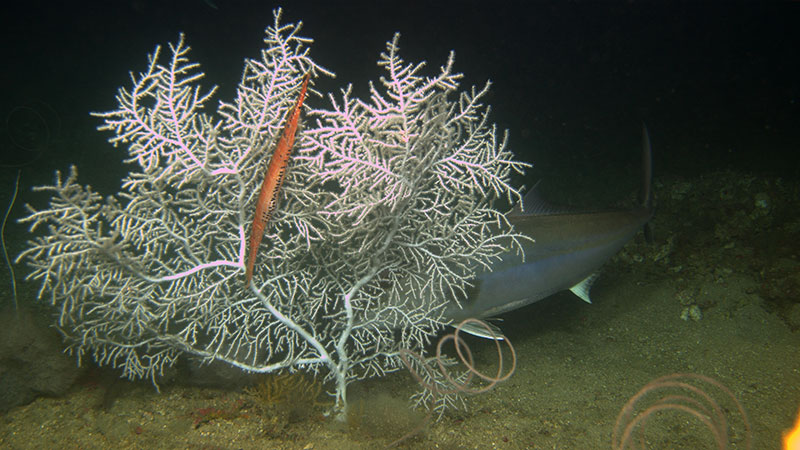
By Annalisa Bracco, Professor, Georgia Institute of Technology
May 5, 2019

Hypnogorgia pendula, an abundant coral species in mesophotic banks of the Gulf of Mexico. Image courtesy of Connectivity of Coral Ecosystems (CYCLE) in the Northwestern Gulf of Mexico. Download larger version (jpg, 7.0 MB).
Marine animals that live on the reefs and banks of the northwestern Gulf of Mexico have propagules (i.e., eggs, larvae, or juveniles) that often move or disperse to other reefs and banks transported by ocean currents. Because it is difficult to track a single egg or larva, we are modeling the oceanic currents that affect the reefs and banks located on the outer continental shelf in the northwestern Gulf of Mexico.
The reefs and banks we are studying are located at depths of 30 to 150 meters (100 to 490 feet) and very little is understood about the various physical processes (e.g., current direction and velocity) at these depths. Preliminary models indicate that water dynamics over short distances 1–10 kilometers (sub-mesoscale circulation) is more intense off the central and west Louisiana shelf than on the Texas portion of the shelf. Understanding sub-mesoscale circulation dynamics is important as this helps us reliably predict where and how larvae disperse or migrate.
We are collecting samples on this cruise of two sea fans, a black coral, and a sponge and will analyze them to determine their genetic and chemical information. This information will be combined with circulation models of larval dispersal that my lab is developing to better characterize the key habitats for our target species and determine if the various populations found on different reefs and banks are related.

An example map showing the probability that larvae disperse from one area to another. This example depicts the potential that six releases of 4,500 passive particles (to simulate larvae) at four sites. The releases are on Days 1, 6 and 11 in each month in 2015 and 2016. The virtual larvae are followed for 30 days assuming no mortality and some capability of swimming/moving in the vertical direction. The color of the arrows corresponds to the site where the particles originated. Image courtesy of Guangpeng Liu, modified from Bracco et al. 2019 (in revision). Download larger version (jpg, 613 KB).